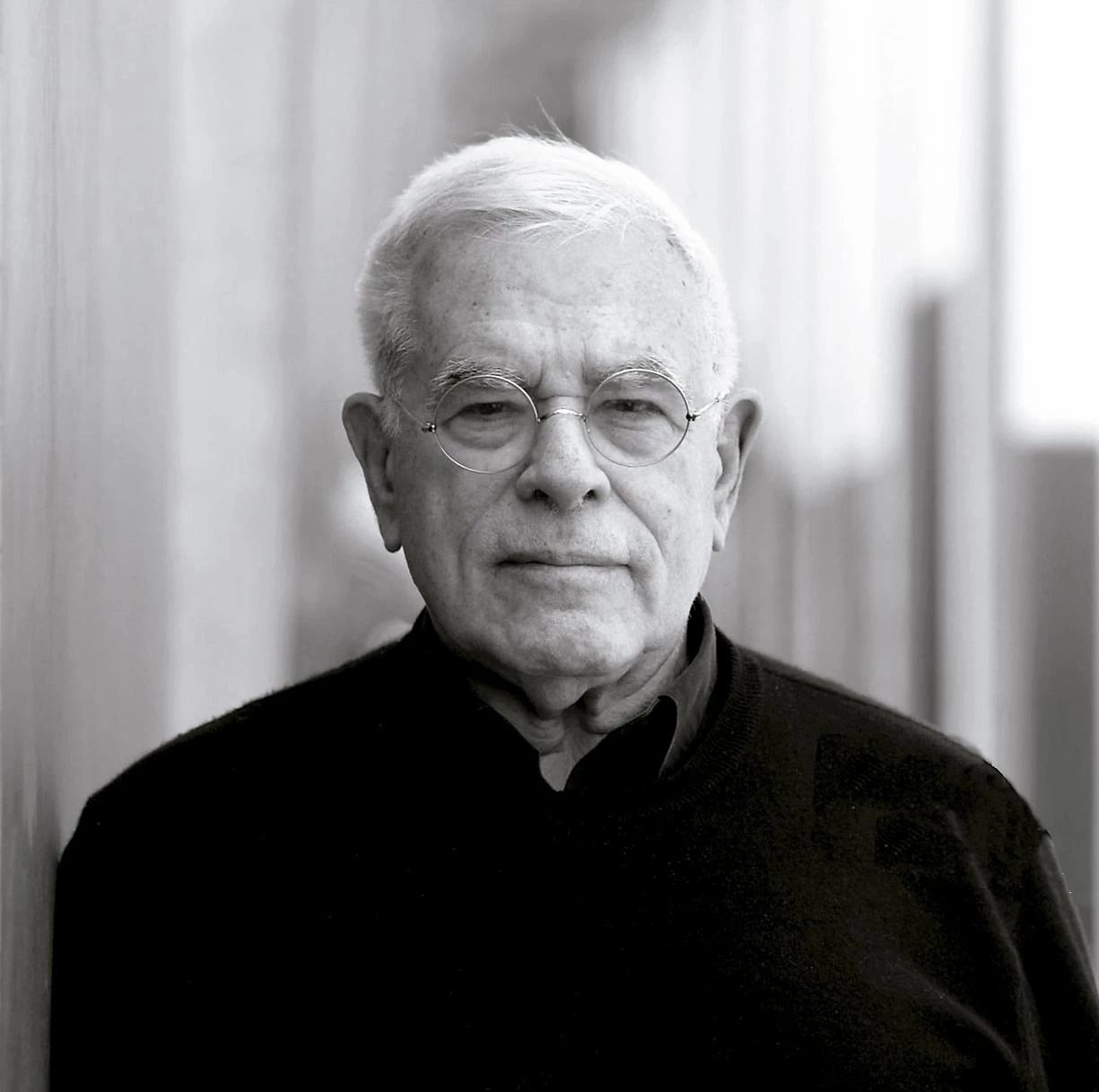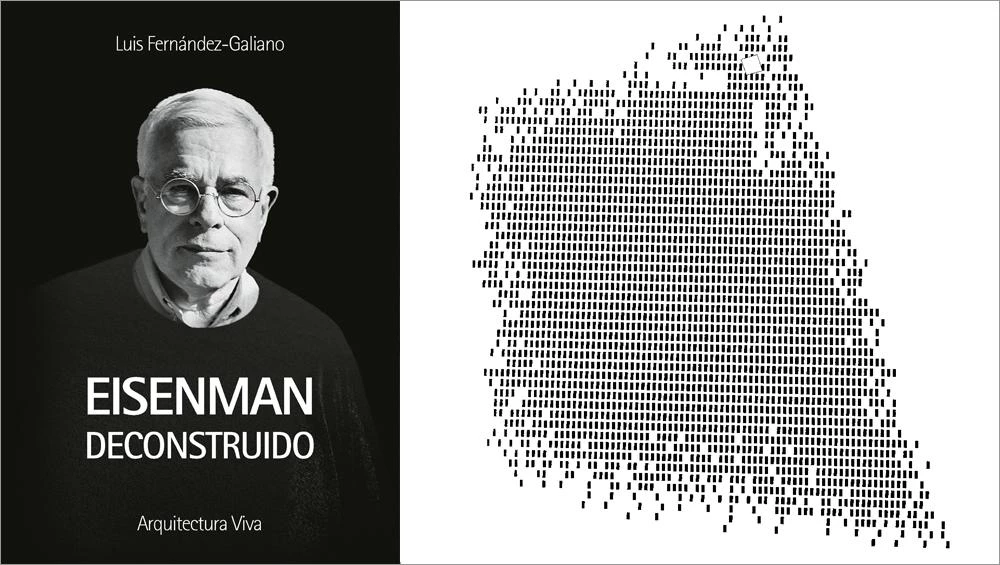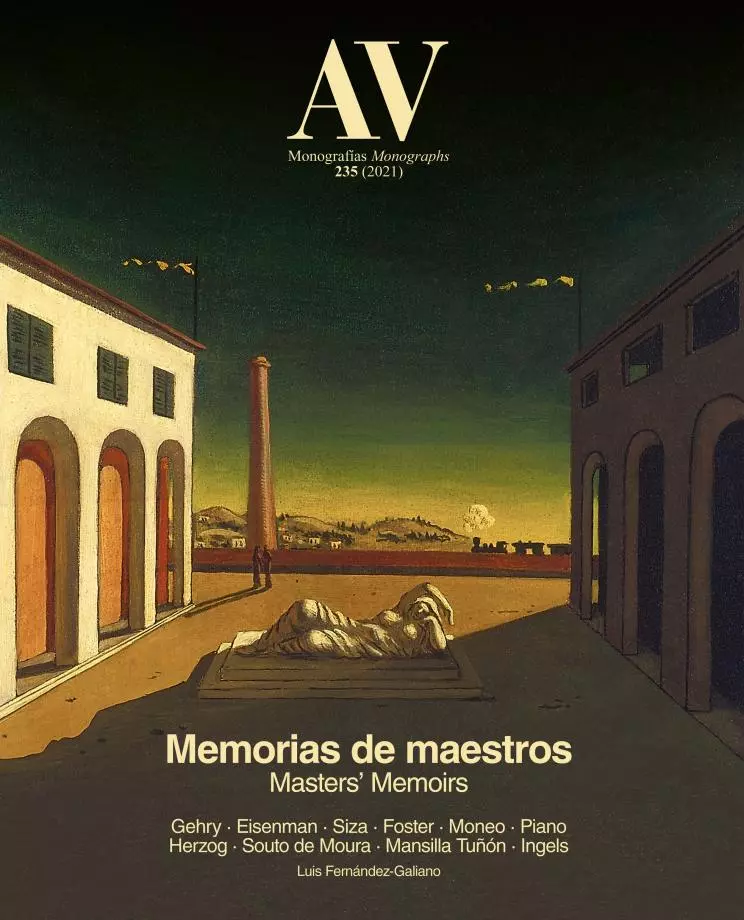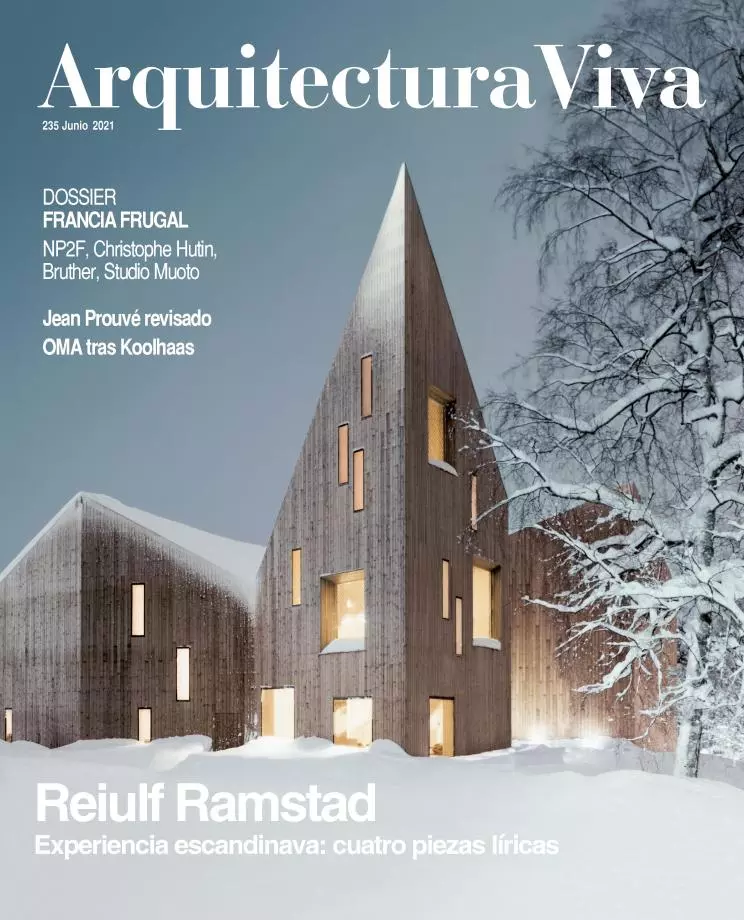
To America came my great-great-grandfather in 1848. There’s a huge difference between people that came in the middle of the 19th century and people who came in the middle of the 20th century, especially among Jewish families in the States. There’s a lot of anti-Semitism that occurs with Jewish families. I didn’t know until I was in 4th grade, when I was 10 years old. My best friend said, “I can’t play with you anymore because you’re Jewish.” I didn’t know what he meant, I had no idea.
My father was a radical lefty. He was an organic chemist and he had to leave the university and go to work. My mother was a spoiled upper-middle-class woman who was first to have a car in her class in high school. My father wanted me to be a chemist like him. I just did what I was told. Somebody said, “You should go to Cornell,” so I went to Cornell. I was studying chemistry and I hated it. It turned out that the counselor who was in charge of the young students was an architect. I would go down to his room and I would see what he was doing. I was 18 years old and I had never heard the term ‘architect.’ I said to this counselor, “You can come to college and build models and things?” – which I loved doing. He said, “Yeah, we draw, we make models.” I thought, “Oh my God, this is fantastic!” I went home and I wanted to gather my family together. We had a traditional living room which we never used except for some occasions. I said I would like to meet in the living room. My father and my mother thought, “Oh my God!” And so I said, “I have something to tell you. I am going to be an architect.” They absolutely jaw-dropped. My father’s first words I can remember: “Is this another one of your jokes?” And he said, “Okay, you can do architecture. You get one year to prove yourself. If you don’t do well, you’re out.”
And the first year, I did fabulously well. I had Gerhard Kallman, who did the Boston City Hall. I had Paul Rudolph. Paul came and gave a project, and I did a Frank Lloyd Wright rip-off because I thought, “this is what I should be doing.” And I got a first prize from Paul Rudolph. The next class was a yacht club and Frank Lloyd Wright had done the Yahara Boat Club, so I copied it. Then I found out Paul was coming on the jury, coming back. I said, “Yey, another prize!” This time I failed and I said, “Mr. Rudolph, what’s the story?!” He said, “You can copy once, not twice.” It was a great lesson.

And so I went to Columbia. And in my class were Michael McKinnel and John Fowler, who was a friend of Jim Stirling. Fowler invited Jim, who was coming to Yale for the first year, down to see our work. Jim came. He was nobody, not very well known at the time. He looked at the work, and I remember him looking right at me. He said, “Peter, you are really a good designer, but you don’t know a thing about architecture.” He was right. And he said, “What you need to do is go to be with Colin Rowe.”
When I arrived in Cambridge, the professor Leslie Martin said, “You know Sandy Wilson, the first-year master, is going out to America?” And he said, “We’d like you to teach the first year.” I was offered to teach. And I met Colin, and Colin is a really seductive guy. He said, “Come and have dinner in my flat.” We would look at Serlio, Palladio… And he had these big folio editions and plans. The Letarouilly Édifices de Rome moderne, the first edition. And he said, “We’ll make an agenda, we’ll go and see the Palladian villas.”
We made a whole trip, and when I went up to Bologna, I was looking at Carracci and Guido Reni. I had a very sophisticated introduction into Italian painting. At the same time, we were looking at architecture, but the painting was really stunning. When Sandy came back from Yale, he gave me Sartoris’s book, Ordre et climat méditerranéens, and in that, for the first time, I saw Terragni, Cattaneo… So I said, “Colin, I’ve got to go to Como, I’ve got to see this.” And when I came upon the Casa del Fascio for the first time, as Colin said, I had an epiphany. Because I’d seen Stuttgart, Weissenhof, Mies’s Krefeld, Schröder House… but this was so animated. I said, “I’ve got to find more stuff about this.” That’s when I started collecting my library, which became an obsession. That was an amazing trip.
I come back with Colin, and Leslie says, “We want you to stay and be on the first year again, and Sandy will move to third year, and Colin to second.” I said, “Look, I want to be an architect.” Leslie said, “Look, you can’t be an architect in England, but I’ll tell you what we can do. You can do a PhD. I’m going to be your adviser and I’m not just going to give you Corbu and Loos and Terragni and Mies, etc. You’re going to do Aalto and Frank Lloyd Wright.” This was Leslie. So I stayed.
Back to America
When I got back to the States, I wanted to organize an American Team 10, and that’s when Michael and I put together this CASE group. What was interesting about CASE was that the first day, we had Colin Rowe and Scully as the two arbiters, and we had Bob Venturi and Richard Meier. Michael and I got a grant of $100,000 from the president of the university to do a linear city, and we brought Tony Vidler over. We brought Ken Frampton... We had a whole separate faculty in the basement of the architecture building working on this ‘linear city project.’ And Tomás Maldonado came down to speak and he brought with him Arthur Drexler, who was the head of the architecture department at MoMA. Arthur came down and saw this huge project, and he said, “I didn’t know young architects were working on the city. I want to have a show.” And I want you and Michael to organize it.” So we organized teams from CASE, Colin Rowe, Jack Robertson, Stan Anderson, Hank Millon. We then got a new dean at Princeton that Michael and I had approved, a guy named Robert Geddes. Geddes came and he said, “Guys, if this is a Princeton show, I’m going to decide who does the project.” I said, “Bob, you don’t understand. Drexler wants us, not Princeton. So we’re going to do the project. If you want Princeton’s name, that’s fine. If you don’t, fine.” And that was the end of Peter Eisenman at Princeton.
The minute Princeton ended in 1967, I went to Arthur Drexler. I said, “I want to start an institute.” Drexler went to the president of MoMA, Rene d’Harnoncourt, and said, “Can we start this offshoot of MoMA called The Institute? And d’Harnoncourt said yes. He gave us two trustees and some money, and we started the IAUS. For young guys to have a thing sponsored by MoMA, having a big show in January of ’67, was really very exciting.
The Five Architects came with the breakup of CASE. We had two meetings at MoMA, where we presented work. And there was a bookstore run by an old German refugee named George Wittenborn. I used to take my kids on a bus across town. I said, “Hey, George, I’ve got a real idea for a book. I’ve got tapes from two CASE meetings.” And he said, “That’s great.” And when we got together, I told the Five, “We’re going to have this book.” And they said, “Yeah, but we can’t call it ‘cardboard architecture,’ because that’s your thing. We don’t want to be called anything, so let’s just put the five names on this book.” So we were just Eisenman, Graves, Gwathmey, Hejduk, and Meier. On the spine it just said ‘Five Architects.’ We had no idea what was going to happen. One day I’m sitting at my breakfast table with my little son Nick. And I’m looking at the sport page, and seeing the front page of the second section of The New York Times, the full page, Nick says, “Hey, Daddy, there’s your picture!” Paul Goldberger had written this story called ‘The New York Five.’
He coined that term. It became a kind of thing, and the next thing I knew, John Hejduk was invited by Bernhard Hoesli to Zurich. He had also invited Rossi when he was thrown out of Italy in 1972. So Aldo was there and met John, and they had an exhibition. Hejduk, Rossi, with Colin Rowe and Hoesli, the four of them. Aldo, meanwhile, was organizing the Triennale of 1973, ‘The Rational Tendency.’ Rossi had met Hejduk, so he said, “Hey, the real rational guys are these five architects from New York,” and invited us to the Triennale.
Theoretical Laboratories
What happened to me at Cambridge was that I learned that you could be as powerful as an intellectual as you could be in building. When Tafuri said to me, “Peter, if you don’t build, no one will give a damn about what you think,” I felt that what I wanted to do was understand abstractly or conceptually what architecture could be. And so I made House II, for example, to be photographed never with sun, only in shadow. And the French published a real photograph of House II that said ‘Model of House II’ because we built it without the proper flashing and the things that go into detailing corners and things. It was built like a model: House I, House II, House III... were all models of houses, basically. For example, House II had a redundant structural system: a wall system and a column system. The whole notion was like Alberti’s Palazzo Rucellai, which is a wall system with heavy masonry. And you say to yourself, “If the heavy masonry is operating like a structure, what’s the wall doing?” The wall is a sign, the columns are a sign. So I was working with the whole question of signing architecture in a certain way.
I realized that a house had a certain scale. Look at the Cidade, where we are. You couldn’t just do houses, so I started entering competitions for larger buildings, and that was a big change in my life. You couldn’t be as pure with intellectual concerns as you could be in a house. You could control a house. And the big change was when I realized that I had to get out of my head and into the ground, and I went into psychoanalysis. I started a 20-year period of psychoanalysis. And that corresponded with the artificial excavation projects, which were all in the ground. The Berlin IBA competition… Cannareggio was another one... They were all ground projects because my psychoanalysis was about going into the ground, getting out of my head.
At this point of time I was 50 years old and had only built four houses. And then suddenly, in Ohio, I built the Wexner Center, the Aronoff, and the Columbus Convention Center, one after the other. Three large, important buildings that were a kind of manifesto for what we would call deconstruction. I didn’t know anything about deconstruction when I did those. I have to be honest. I didn’t start reading Derrida until ’86, ’87. Whatever I was doing – and Derrida himself said, “When we met, you were already doing deconstruction” – I had no idea. I was off philosophy, don’t forget. I had been on philosophy, on Chomsky and Foucault and others, but I left that when I left the Institute and the magazine Oppositions.
Mentors and Clients
In my life, there have been three mentors. And at the end of my life, or at the end of their lives, they were not talking to me. Not Colin Rowe, nor Tafuri, nor Derrida. I had turned away from them in some way. Through psychoanalysis, I became me. Through being away from these philosophical characters and the need for enrichment in philosophy, I was able to build. And look, the Berlin memorial. It will remain there when nothing is left of my thought. It will be in the center of Berlin forever. What I’m saying is that I became an architect, which psychologically is what I wanted to be.
Psychoanalysis helped me to become a builder. Otherwise I would have lived in my head. I would have been one of these Martians walking around in a bubble. That’s where I was. And I had to get into reality. There’s a lot of reality in this stone on the floor, on those columns… There’s a lot of thinking about how you want to deal with this wall, its thickness and depth and scale. I say, why do we need to do that? These are the kinds of things that make architecture. For me at least, this is important. It was the first time spinning with the idea that the Hegelian synthesis, the dialectical thesis, may not be possible in architecture. We see great buildings so rarely that maybe the struggle for synthesis is misplaced for architects.
Perhaps here in Galicia I did try to make this synthesis, with Manuel Fraga, who was a great client because he had a vision. He remembered the Valle de los Caídos, a monument to Franco, but said, “I don’t want a monument to me. I want a monument to this society, to the Spain that is coming, and to Galicia, my home.” And I was the perfect foil for him because I was going to produce something no one else had produced. We had a spell of bad luck. He lost by one seat. If he had won, it would have been a different situation.
Another good client was the president of Ohio State University, who assigned us the Wexner Center. We won the competition and he said, “Nobody’s going to touch this building. We’re going to build it just like this.” He was insistent. He told all his vice presidents, “We’re not moving an inch. I don’t care what it costs.” He had no money, though. My colleague Richard Trott knew Les Wexner, had done a house for Wexner, so he said, “Let’s bring Les Wexner to show him this.” So Dick, Ed Jennings, and I brought him the model. He looked and said, “Ed, how much do you want?” Ed said 25 million and Les said, “Okay.” And he said, “You know why I’m giving you the money? Because the people of Ohio are going to hate this building.” What he meant was “I hate the building,” and he always has. But it was a big break, and we were able to build it beautifully. Then with the Aronoff we had a similar kind of client, a right-wing Republican, head of Ohio’s legislature, who wanted his own representation in Ohio. So we got to do the Aronoff Center. It’s a really interesting building.
Landscapes of Memory
In Berlin, it could be said that Helmut Kohl was the client for the Memorial. Later he was defeated by Gerhard Schröder, who at first was against the Memorial. It was the time of the World Football Cup and I told Helmut Kohl, “If Germany wins the World Cup, you’re going to win the election.” Germany didn’t win the World Cup, and he got beaten in the election. The project was dead. What happened was that Martin Walser, a German writer, critic, and philosopher, won a peace prize, and in his acceptance speech he said, “I’m against the Memorial. We’ve given enough money to those Haifa bankers.” That sparked an outrage. Suddenly anti-Semitism reared its head in Germany over the project, and the Jewish communities got behind it. Schröder, giving in to Jewish populism, then had to back it, so it suddenly came to life again. We did three different versions. Michael Naumann, who was the Minister of Culture, took it out of the Chancellery and into the Senate, and set up the legislation. So the vote was between Eisenman I, Eisenman II, and Eisenman III. It had to be one of them, nobody cared which one. It was law, so had to be built.
Once it was built, the question of what it was a memorial to was no longer important, because people sunbathe there, have their lunch there, do all kinds of activities. It’s a meeting ground. I wanted to normalize the idea of the Holocaust. I wanted it to be an everyday event so that a little Hans – thousands of schoolkids visit – would go home to his grandfather, who might have been in the SS, and who would ask, “What did you do today, Hans?” And Hans could say, “I had a great field trip to the Holocaust Memorial!” To which the grandfather would respond, “Aaaah!” That is what I wanted, that children, people in general, could speak of it as something everyday… “Ah, I went to the Holocaust Memorial and had a great time!”
In the competition for the World Trade Center, the developer came over to us before the judgment, looked at the thing, and said, “I’m not going to build that. I don’t care what anybody says. It’s not rentable. I can’t build it.” And that was it. He was on the jury. We were done. If you’re playing in the high-stakes world of these kinds of competitions, you’ve got to be prepared to lose, to not win. We lost some of them that we really wanted to do... I never saw Quai Branly, we wanted desperately to build that. I wanted to build Max Reinhardt, my client wanted to build it. We did six or seven iterations of the Cardinal Stadium because nobody wanted this damn thing in their hometown. We did six different sites. Finally we were able to build it. So the back story on all the things that got built, including this City of Culture, is really more interesting than the front story, and we very rarely hear about it.
Between ‘Zeitgeist’ and ‘genius loci’
In the last fifteen years I have also been very active in publishing, but I would argue that no matter how many books I’ve done, I’ve not done my Bob Venturi Complexity and Contradiction, I’ve not done my Aldo Rossi The Architecture of the City, I’ve not done my Rem Koolhaas Delirious New York. And even though, as Tafuri says, “you better build,” if you don’t have your book, you’re no place. The people that I admire – Venturi, Rossi, Koolhaas – all have that book. They’ve done it. My buildings might have to stand for that because I may never do that book. To write that book is part of my endgame. Then you ask me, “What is that book?” I haven’t yet focused on it.
Today, speaking of architecture, I no longer believe I belong to the Zeitgeist rather than to the genius loci. I don’t belong to either. Can I define what ‘other’ there is? The idea of the ‘other,’ to me, is still the dominant idea. Since the day that kid said, “I can’t play with you,” I have felt that I was ‘other.’ I used psychoanalysis like a ship in the fog. There were two horns, one on each side. And I would steer between them, not getting too close to one or the other, but staying in the middle, trying to discover the ‘other,’ to be at peace with it. What you learn in psychoanalysis is not that you can be cured, but that you can come to terms with what can’t be cured, that you don’t have to demand curing. And I’m not cured. But I don’t worry about that.






